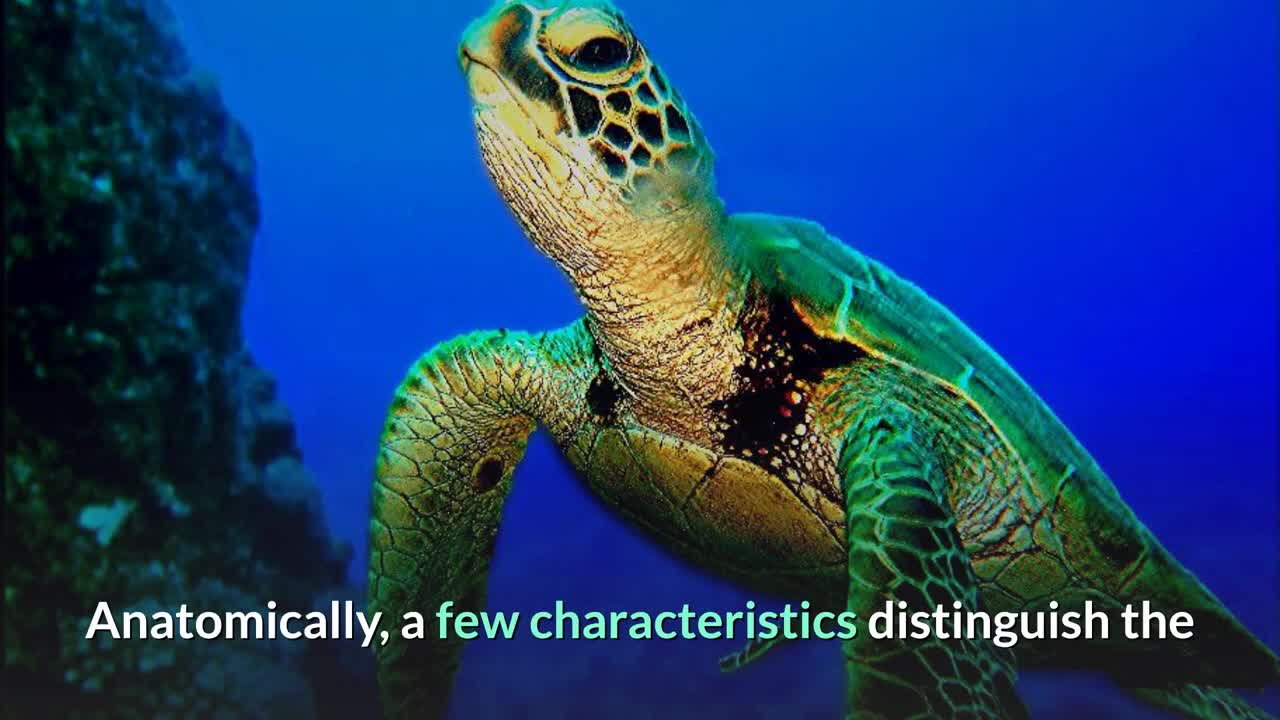Premium Only Content

Green Sea Turtle || Description, Characteristics and Facts! 1.7K views · 1 year ago
0:22
/
4:10
Description
Green Sea Turtle || Description, Characteristics and Facts!
27
Likes
1,708
Views
2020
Oct 30
The green sea turtle (Chelonia mydas), also known as the green turtle, black (sea) turtle or Pacific green turtle, is a species of large sea turtle of the family Cheloniidae. It is the only species in the genus Chelonia. Its range extends throughout tropical and subtropical seas around the world, with two distinct populations in the Atlantic and Pacific Oceans, but it is also found in the Indian Ocean. The common name refers to the usually green fat found beneath its carapace, not to the color of its carapace, which is olive to black.
This sea turtle's dorsoventrally flattened body is covered by a large, teardrop-shaped carapace; it has a pair of large, paddle-like flippers. It is usually lightly colored, although in the eastern Pacific populations parts of the carapace can be almost black. Unlike other members of its family, such as the hawksbill sea turtle, C. mydas is mostly herbivorous. The adults usually inhabit shallow lagoons, feeding mostly on various species of seagrasses. The turtles bite off the tips of the blades of seagrass, which keeps the grass healthy.
Like other sea turtles, green sea turtles migrate long distances between feeding grounds and hatching beaches. Many islands worldwide are known as Turtle Island due to green sea turtles nesting on their beaches. Females crawl out on beaches, dig nests and lay eggs during the night. Later, hatchlings emerge and scramble into the water. Those that reach maturity may live to 80 years in the wild.
C. mydas is listed as endangered by the IUCN and CITES and is protected from exploitation in most countries. It is illegal to collect, harm or kill them. In addition, many countries have laws and ordinances to protect nesting areas. However, turtles are still in danger due to human activity. In some countries, turtles and their eggs are hunted for food. Pollution indirectly harms turtles at both population and individual scales, as well as light pollution. Many turtles die after being caught in fishing nets. Also, real estate development often causes habitat loss by eliminating nesting beaches.
-
 6:58
6:58
The Shannon Joy Show
13 hours ago🔥Teen Girl Just Changed NY Law🔥
3.2K -
 32:40
32:40
James Klüg
1 day agoAnti-Trump Protesters Get FACT CHECKED In Real Time
10.7K16 -
 10:27
10:27
TheAsherShow
23 hours agoDuolingo Is The Absolute Worst
2.74K4 -
 13:11
13:11
Actual Justice Warrior
1 day agoWhite Guilted Judge Admits He Was WRONG
13.3K8 -
 25:56
25:56
DeVory Darkins
1 day ago $9.45 earnedDemocrat Mayor EXPLODES on Camera after ICE raid as Bondi makes SHOCKING announcement
21K117 -
 1:08:56
1:08:56
Dialogue works
1 day ago $1.86 earnedAlex Krainer: Is Ukraine Doomed to War Forever? - Is Israel on the Brink of War with Iran?
14.3K12 -
 1:08:42
1:08:42
Inverted World Live
15 hours agoFrom Satanist to Exorcist w/ Rick Hansen
293K25 -
 1:47:22
1:47:22
Man in America
17 hours agoHow to Live FREE in the Coming AI-Controlled Police State | Seth on BardsFM
94.9K31 -
 3:17:04
3:17:04
I_Came_With_Fire_Podcast
17 hours agoIs the Culture Healing w/ Aaron Love from @OnesReady
62.7K4 -
 2:05:29
2:05:29
TimcastIRL
11 hours agoLegacy Media In Full Freak Out Over Trump Putin Meeting, "Reached An Understanding" | Timcast IRL
211K161